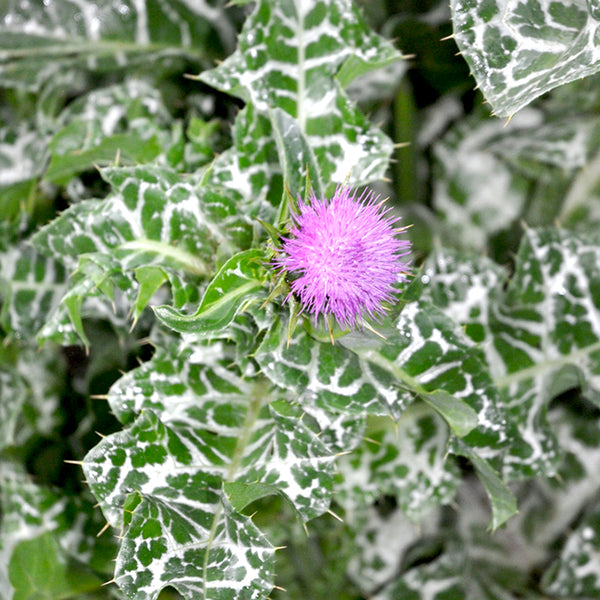Milk Thistle (Organically Grown Seeds)
$3.74 was $4.99
This item may be out of season or currently out of stock. Please check back.
Description: Milk thistle has such a bold and attention-getting presence in the garden! The spiky leaves are strongly variegated white and green, and the plant grows up from a rosette. The purple flowers appear in mid to late summer, and are undeniably thistle in nature! Birds love foraging for the seeds in late summer.
Many people know milk thistle from the health food store, where the ground seeds can be found in supplements recommended for liver health.
Organically Grown/ Heirloom/ Open Pollinated/ Non-GMO
Pack Size: ~ 60 seeds
Latin Name: Silybum marianum
Alternative Names: Variegated Thistle
Main Uses: Medicinal, ornamental, pollinator, edible (roots, stems, young de-spiked leaves)
Zone Hardiness: Reseeding annual
Exposure: Full sun
Height: 60 - 120 cm (24 - 48 inches)
Flower Color: Purple
Flowering Time: Mid to late summer
Seed Source: Organically grown
Germination: 3 - 7 days at 21°C.
Sowing: Indoors 4 weeks before the last frost. Avoid starting milk thistle too early, as the plants get large quickly and do not grow easily indoors. Milk thistle has a tap root and transplants most successfully if sown directly into a compostable container. Apply Sea Magic from the first watering. From the second set of true leaves to the time of transplanting, alternate between Sea Magic and seed-starting fertilizer (such as Evolve) once per week.
Planting Depth: 0.6 cm (1/4”)
Spacing (Seedlings): 1 plant every 60 cm (24")
Outdoors: Direct seeding is an excellent, easy-care method for establishing milk thistle. Sow 2-3 seeds every 60 cm (24"), in June (once all chance of frost is passed).
Seed Spacing: Sow every 8” - 12” and then thin to 18” - 24”.
Growing in Containers: Only large planters are suited to milkweed, something like a half barrel.
Fertilizing (Containers): Fertilize containers regularly with an organic fertilizer.
Watering (Containers): Water containers deeply when the top inch feels dry to the touch. Monitor every day or two during very hot weather.
Growing in Mixed Planters: Not well suited to mixed planters.
Fertilizing (Garden): Plant into well-drained garden soil, amended yearly with compost. No additional fertilizer is required.
Watering (Garden): Water deeply to establish. Water mature plants weekly during hot weather.
Beneficials Attracted to this Plant: Attracts pollinating bees, butterflies, and hoverflies (these are good - they are excellent aphid eaters!).
Harvesting: One of the main claims to fame when it comes to milk thistle is the use of the seeds for liver health; the large seeds can easily be harvested from mature flowerheads in late summer. Although few people think of milk thistle as a culinary plant, the roots, and young leaves can be harvested and used (like a wilted green).
Suitability for Indoors: Not suited for indoors.




